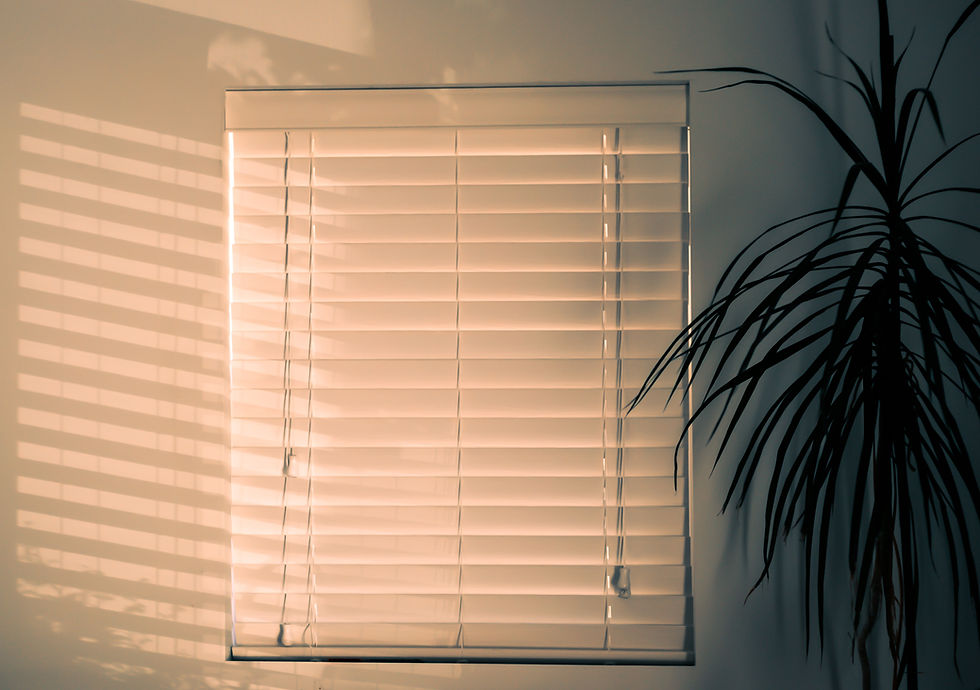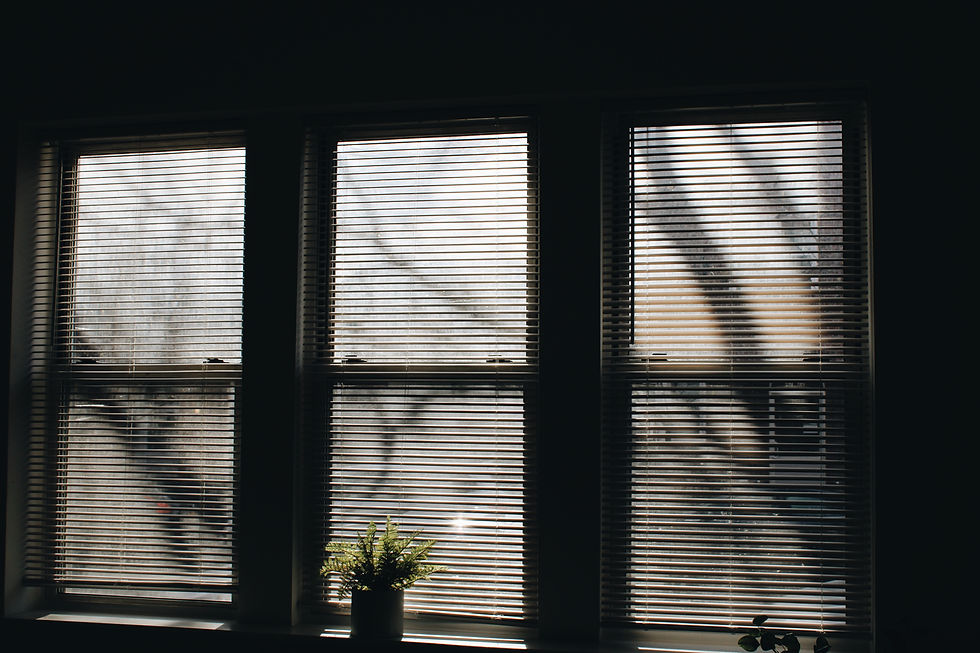Indoor Blinds Protect Your Furniture from Sun Damage
- ameliya lanne
- Sep 11, 2025
- 4 min read
One of the overlooked challenges every homeowner face is the continual battle against the sun. Over time, sunlight streaming into the house can cause considerable damage to your furniture, carpets, and artwork by fading their colours and damaging their structure. This is mainly due to harmful ultraviolet (UV) rays, which account for about 40% of the sun's damaging effects on the interiors of homes. This issue, while small at first, can turn your investment in quality home decor useless.
Over time, these UV rays, when left unchecked, can cause fabrics to become brittle, leather to crack, and wood to warp. Sunlight can also dramatically fade and change the color of artwork and photographs. Despite the risk, very few people take adequate measures to protect their homes from sun damage.
Safeguarding your interior spaces from the harmful effects of the sun isn't just beneficial to your property; it can also be a way to enhance the style and functionality of your home. The secret lies in one simple, transformative element: indoor blinds.

Understanding Indoor Blinds
Not just standard window coverings indoor blinds designed to give control over the amount of light that enters your rooms. They offer a solid line of defence against harmful UV rays while enhancing the aesthetic appeal of your interiors.
There are numerous types of indoor blinds available, each with their unique advantages. Some of the popular choices include Marine blinds, Venetian blinds, Roller blinds, and Vertical blinds. Marine blinds are great for humid or misty environments, while Venetian and Roller blinds offer a traditional aesthetic with superb light control. Vertical blinds, on the other hand, are ideal for larger windows and sliding doors.
Indoor blinds are not just functional; they also offer significant aesthetic value. Depending on the type, color, texture and pattern, these blinds can become a central feature of your home’s décor or subtly blend with the background. The key is knowing which type of blind best suits your home's interior design.
The Science Behind it
Indoor blinds perform their magic in a scientifically proven way. These accessories control light and heat entering a room, thereby reducing the intensity of harmful UV rays. They either reflect, absorb, or even completely block sunlight and UV radiation to varying proportions, depending on the material and design.
UV blockage percentages are often used to depict how effective a specific blind is at preventing harmful rays. For instance, a blind with 95% UV blockage capability can prevent almost all UV rays from penetrating through. The few that do pass are stripped of their destructive capabilities, thereby drastically reducing the risk of sun damage.
Choosing the Right Blinds
Many considerations dictate what type of Indoor blinds to buy for maximum functionality and aesthetics. The size and orientation of the window, your home’s general interior décor, and your specific needs regarding light control and privacy all play a part.
Case in point, a mid-century styled home might benefit from the classic look of Venetian blinds, while a modern minimalist interior might be most complemented by the sleek simplicity of roller blinds. Meanwhile, for a rustic interior design, woven wood shades might create the most harmony. Not only will these carefully chosen blinds act as sun-protectors, but they can also flesh out your home’s personality.
Other Notable Benefits of Indoor Blinds
Aside from being sun-protectors, indoor blinds offer numerous other benefits. For instance, they provide an extra layer of insulation, thus increasing energy efficiency. They can also enhance your privacy from nosy neighbours or prying passer-by eyes.
Indoor blinds are much easier to maintain than other window treatments like curtains or drapes. If they're well taken care of, indoor blinds can last a long time, providing excellent value for money.

Installation and Maintenance
Despite their high functionality, installing indoor blinds isn’t a complex process. You can either do it yourself, with the right tools and a helpful guide, or hire a professional to take care of it.
Cleaning and maintaining indoor blinds is also easy. Dust them regularly, and for more thorough cleaning, wipe them down with a damp cloth.
Alternatives to Indoor Blinds
If blinds aren't your style, other options can protect your furniture from sun damage. These include curtains, shutters, and window tints. However, each has its limitations. Curtains for instance only offer substantial UV defence when completely closed, obstructing views and natural light.
In comparison, indoor blinds not only offer the flexibility of adjustable light control but are also more effective in UV defence, more stylish, and easier to maintain.
Conclusion
In conclusion, indoor blinds make a vital addition to any home. Not only do they help protect your furniture and other items from harmful UV rays, but they also elevate your aesthetic style, offer privacy, and increase energy efficiency.
If you aren’t already using indoor blinds, it's high time to consider them. Not only will you be investing in the durability of your interior decor, but your home will also look better for it.








Comments